The iconic Mercedes-Benz tri-star badge today graces a wide range of products, from the little CLA sedan to the flagship GLS crossover. It’s also found on one of the world’s most popular vans, the big Sprinter. And, as the German automaker accelerates its switch to zero-emissions propulsion, the latest model to go all-electric is the 2024 Mercedes-Benz eSprinter. Headlight.News spent a day in Southern California testing it out and discovered it was surprisingly fun to drive while delivering plenty of range. It also maintains the flexibility of the classic Sprinter and could even wind up with an RV option.
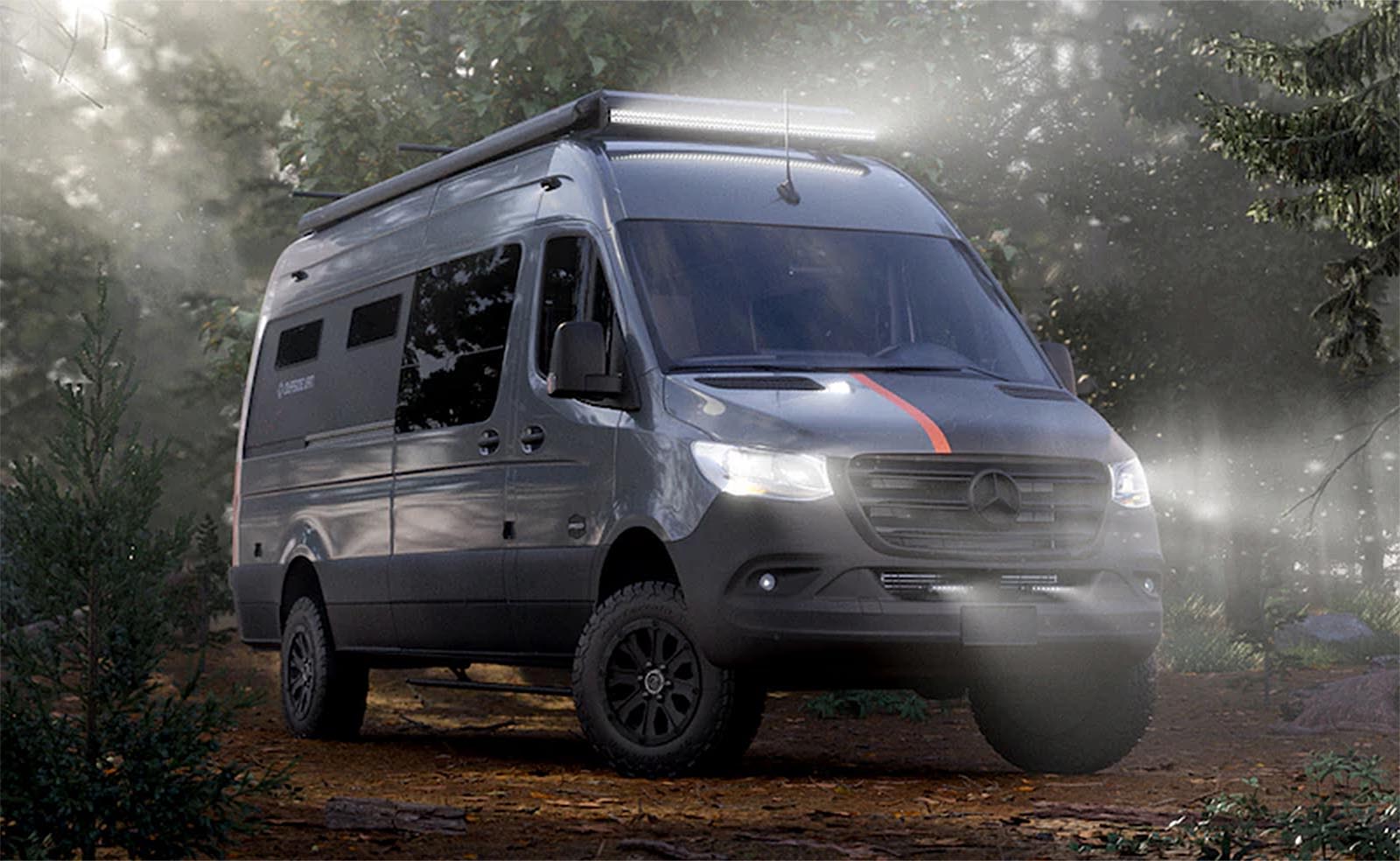
Mercedes is looking at a variety of options for the eSprinter — perhaps a customized RV similar to this diesel Sprinter package.
After growing almost eight-fold over the past four years, EV sales slowed down during the second half of 2023. In the passenger car market, that is. If anything, it continues to accelerate in the commercial world where fleet buyers have discovered that, even with a higher initial price tag, they can quickly recoup their investments thanks to lower EV operating costs.
The latest model to enter the segment is the 2024 Mercedes-Benz eSprinter, the all-electric version of the popular Sprinter van. At first glance, it’s hard to tell the difference between the two beyond the battery model’s lack of a tailpipe.
And that’s likely to be a good thing for potential buyers. Careful engineering ensured the EV model not only delivers more than enough range – at an EPA-estimated 215 miles – for most applications but that it maintains the substantial flexibility and utility of the original diesel van. It not only has a huge cargo capacity but can readily be transformed into a variety of configurations, including last-mile delivery van, passenger shuttle and even a recreational vehicle.
A big beast
Mercedes eventually plans to offer different versions of the eSprinter, much as it does with the diesel model. For now, however, it’s coming to market in full-length form, measuring 280 inches in total length, with a 170-inch wheelbase. Width is 92.3 inches including mirrors and it boasts a height of 107.1 inches, making it easy for even tall adults to walk inside.
The classic Mercedes Sprinter van has found widespread use among last-mile delivery services, and that’s expected to continue with the eSprinter as it has more than enough range to handle the typical daily route which, according to industry data, is generally less than 200 miles. Equally important is the fact that Mercedes engineers have found a way to mount both battery pack and motor drive below the load floor without cutting into interior space. In cargo configuration, it has a capacity of 488 cubic feet, and 2,624 pounds.
There’s plenty of room to fill the cabin with seats for a shuttle van. But the German automaker is looking at yet another potential application. Mercedes has begun “testing the market” to see if there’s enough demand to offer an all-electric RV version of the eSprinter, much as its doing with the diesel model. Initial indications are that “This could open up a new market for us,” Klaus Rehkugler, the head of sales and marketing for Mercedes-Benz Vans said during an interview. He added that Mercedes already is “talking to upfitters” who could handle the conversation process,
ePower
The 2024 Mercedes eSprinter is motivated by a single permanent magnet synchronous electric motor is mounted on the rear axle. The automaker offers two options, one delivering a modest 134 hp, the other the high-output package I drove in California that bumps that up to 201 hp. Torque peaks at 295 lb-ft for up to 30 seconds. That’s more than enough to comfortably haul a full cargo load. The e-van also has a rated 4,000-lb towing capacity.
Energy comes from a 113-kilowatt-hour lithium-iron-phosphate battery. Though it has slightly less energy density than more familiar lithium-ion technology, the pack still delivers an EPA-rated 215 miles per charge – which is substantially more than some of the competing electric vans on the market. LFP technology does offer several advantages, a lower price tag, for starters. It’s also more robust and less prone to catch fire – though that risk has been highly overstated for conventional EV batteries.
Fleet operators are likely to park their eSprinters over night and, using a Level 2 240-volt charger they could get a 100% recharge from a fully drained battery in 12.5 hours. Using a public quick charger of at least 115 kW output, the e-van will go from a 10 to 80% state-of-charge in approximately 42 minutes.
More EV News
- Tesla power steering probe is a step away from a full recall
- Reversing course: GM adding plug-in hybrids to U.S. fleet
- Review: Genesis EV60 is a design gem
On the road
During a day along the Orange County coast in Southern California I had the opportunity to put the 2024 eSprinter through a variety of different driving situations, including stop-and-go traffic, high-speed highways and even some more hilly terrain heading inland.
The electric van proved surprisingly easy to maneuver through traffic, despite its big footprint. Perhaps the biggest challenge I faced was finding a suitable place to park during a restroom break.
My van carried a modest 400-pound load and still provided more than acceptable acceleration – though I’d love to take another run with a cargo load filled to the rafters. I was more than able to keep up with traffic, even executing a couple high-speed freeway passes – though eSprinter has an electronically limited top speed of 75 mph.
During most of my drive I kept the drive mode selector in “Comfort,”, the quickest setting. The van was a bit more sluggish in “Eco” mode, and I’d have opted for “Range Extender” setting only if I had to stretch a trip to the limits. The good news is that when in either of the slow modes, there’s a kickdown switch in the accelerator pedal that will add a brief, additional burst of power.
A touch of luxury
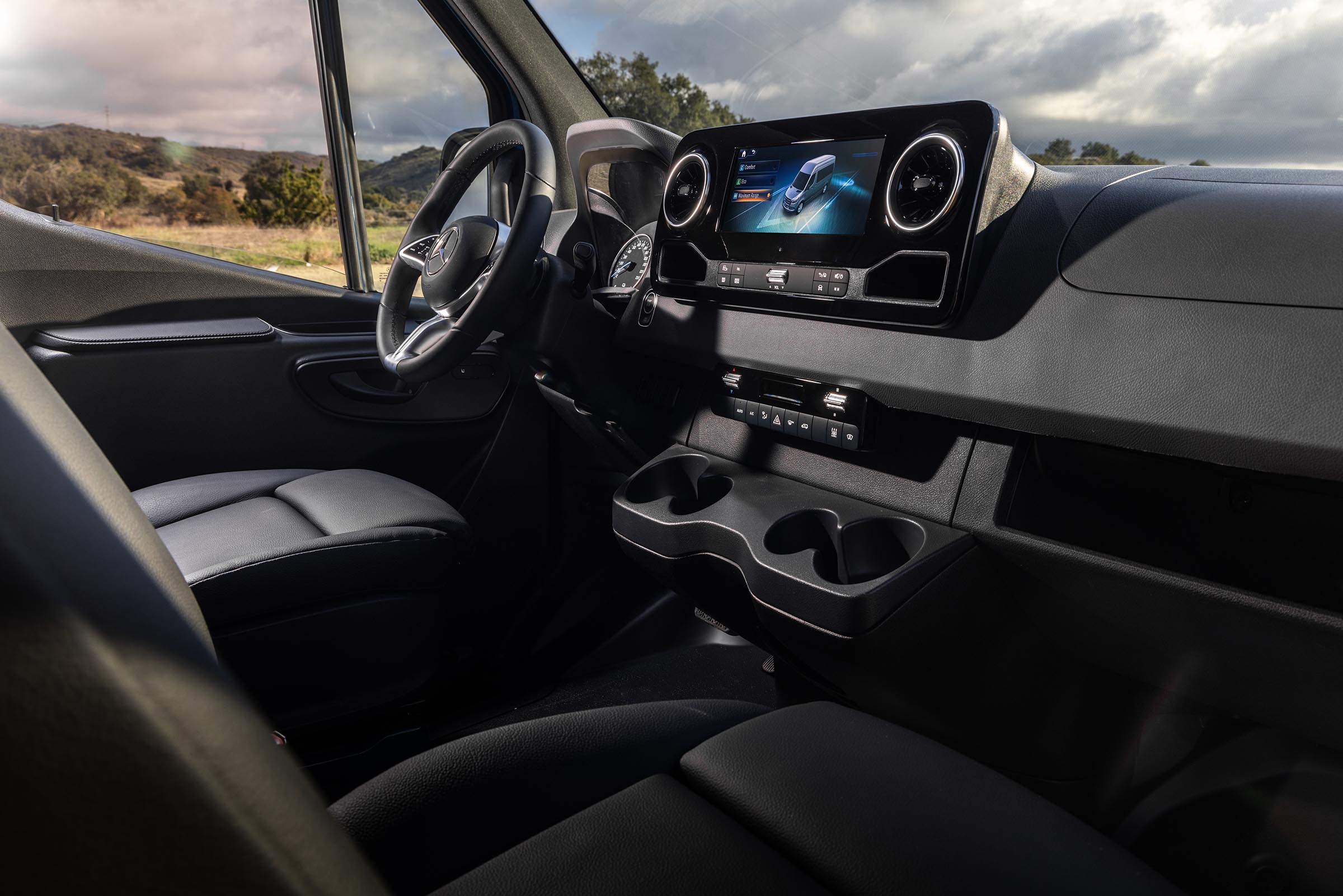
The 2024 Mercedes-Benz eSprinter is offered with a variety of digital features, including the MBUX voice assistant.
The eSprinter isn’t going to be an option most Mercedes retail customers will opt for – unless they run a business or want to confirm the van into an electric RV. It certainly doesn’t offer the sort of high-line luxury touches you’d expect, say, from an E-Class sedan or GLE crossover. But, as anyone who’s driven a recent-vintage Mercedes knows, the definition of luxury has gone beyond leather and massaging seats.
Now, luxury vehicles have to deliver an extensive range of tech features. No, the eSprinter doesn’t offer the pillar-to-pillar Hyperscreen found in the all-electric EQS, but it does have a reasonably large touchscreen in the center stack. And it can serve a variety of purposes. With the navigation option it not only lays out a route but also shows where to charge up along the way. Fleet buyers also can activate a cloud-based connected-car system to not only track the van but see how well it’s operating.
And buyers can opt for the MBUX, or Mercedes-Benz User Experience. Simply say, “Hey, Mercedes,” and a voice assistant will adjust cabin temperature, change radio stations, set a destination or operate other vehicle functions.
My favorite feature, however, is the digital rearview mirror. In most configurations, a conventional mirror is useless, especially in cargo van configuration with a full bulkhead behind the two front seats. The mirror uses a camera mounted above eSprinter’s yawning cargo doors. The van, incidentally, offers a number of other electronic safety features, such Active Brake Assist and Blind Spot Assist.
Wrapping up
If an all-electric full-size van is on your shopping list, the 2024 Mercedes-Benz eSprinter stands up quite well compared to the growing list of competitors from manufacturers like General Motors, Ford, Stellantis and newcomer Rivian. It boasts massive space, more than enough power and plentiful range.
There is a price penalty however. The eSprinter starts at $71,886 – plus $2,295 in delivery fees. A similarly sized diesel model has a $53,400 base MSRP, though it lacks a few features and offers less power out of a 4-cylinder engine. The high-output diesel jumps to $59,100. Of course, if you’re a fleet buyer you’ll likely factor in overall operating costs and, in most situations, come out ahead.
The vast majority of eSprinters will find their way into fleet applications, as is the case with the diesel Sprinter. But the all-electric drivetrain has a lot of potential for those who might find more personal uses, starting with a roomy RV conversion. Even if Mercedes chooses not to directly offer that option it’s all but certain some aftermarket upfitters will weigh in.
Mercedes has begun accepting order for the new eSprinter – which it is getting set to start rolling out of its factory in the suburbs of Charleston, South Carolina. Deliveries are expected to begin around mid-year.

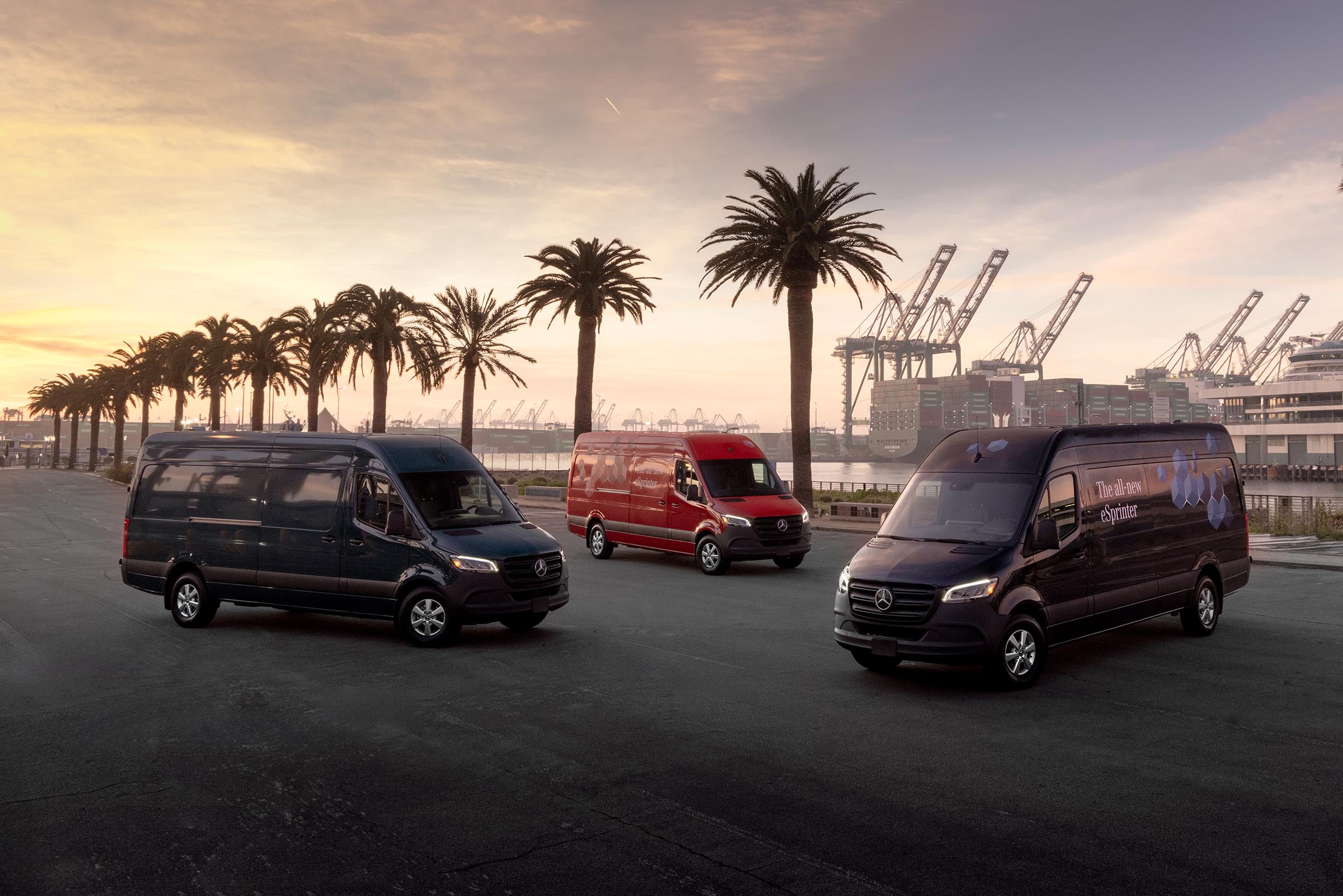
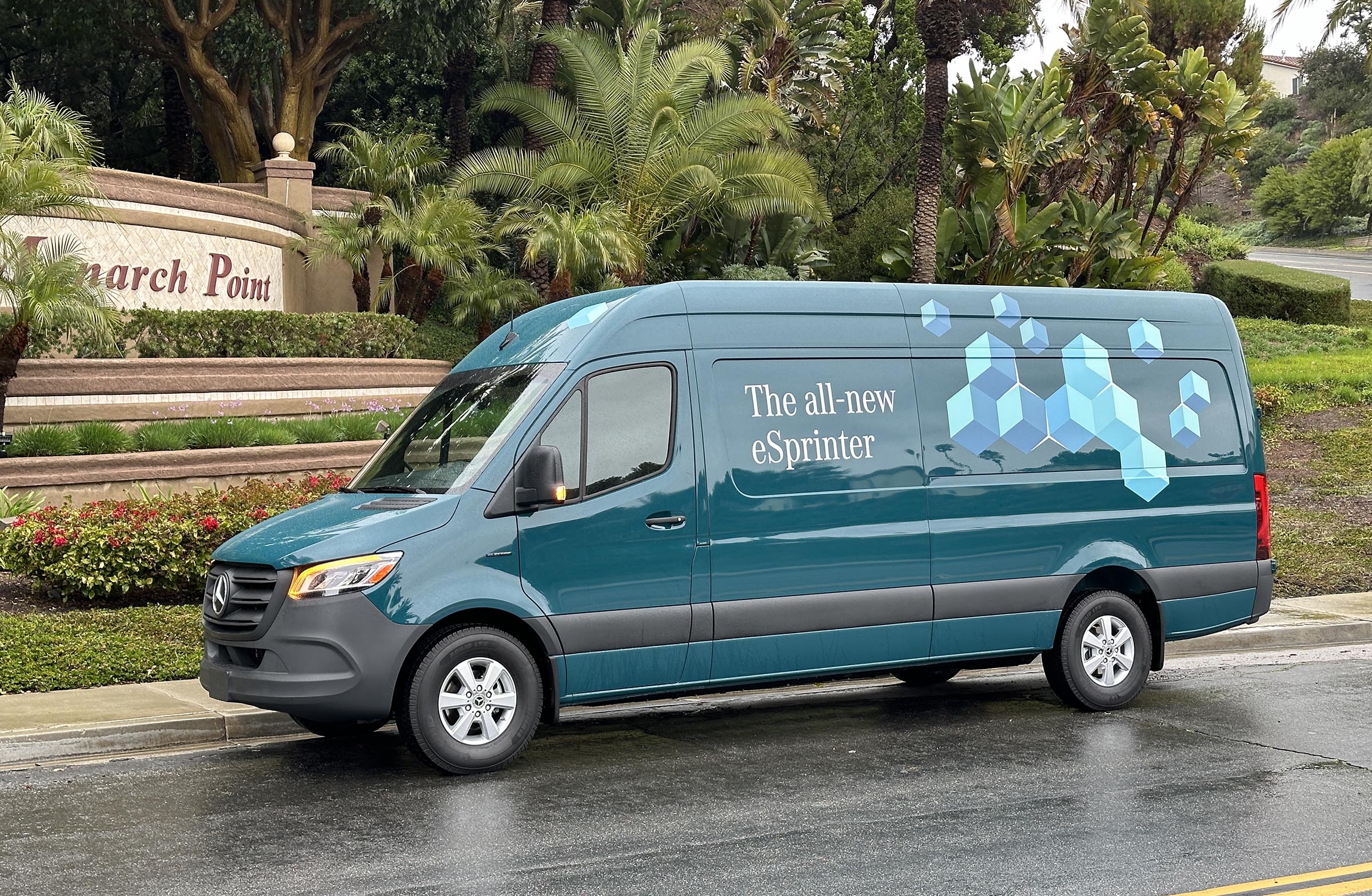
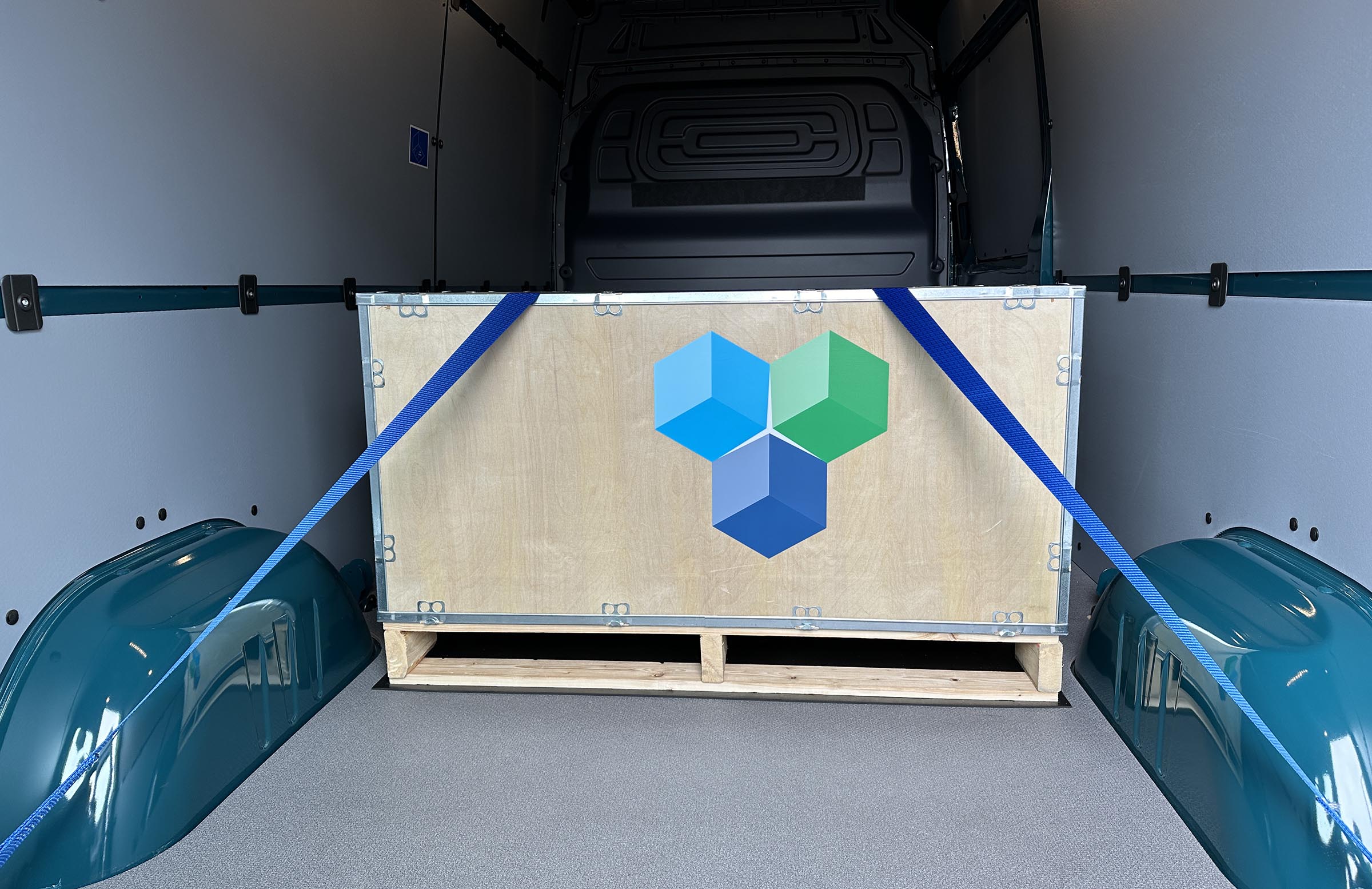




0 Comments